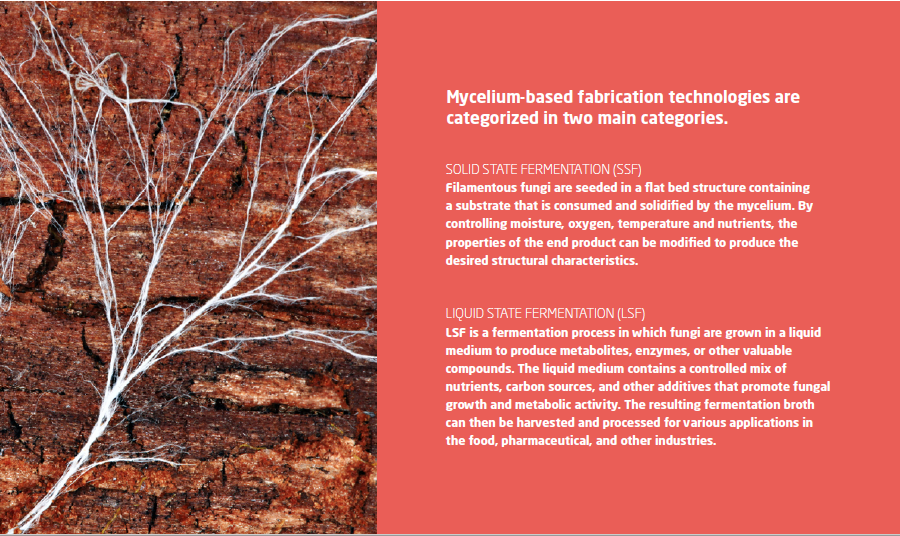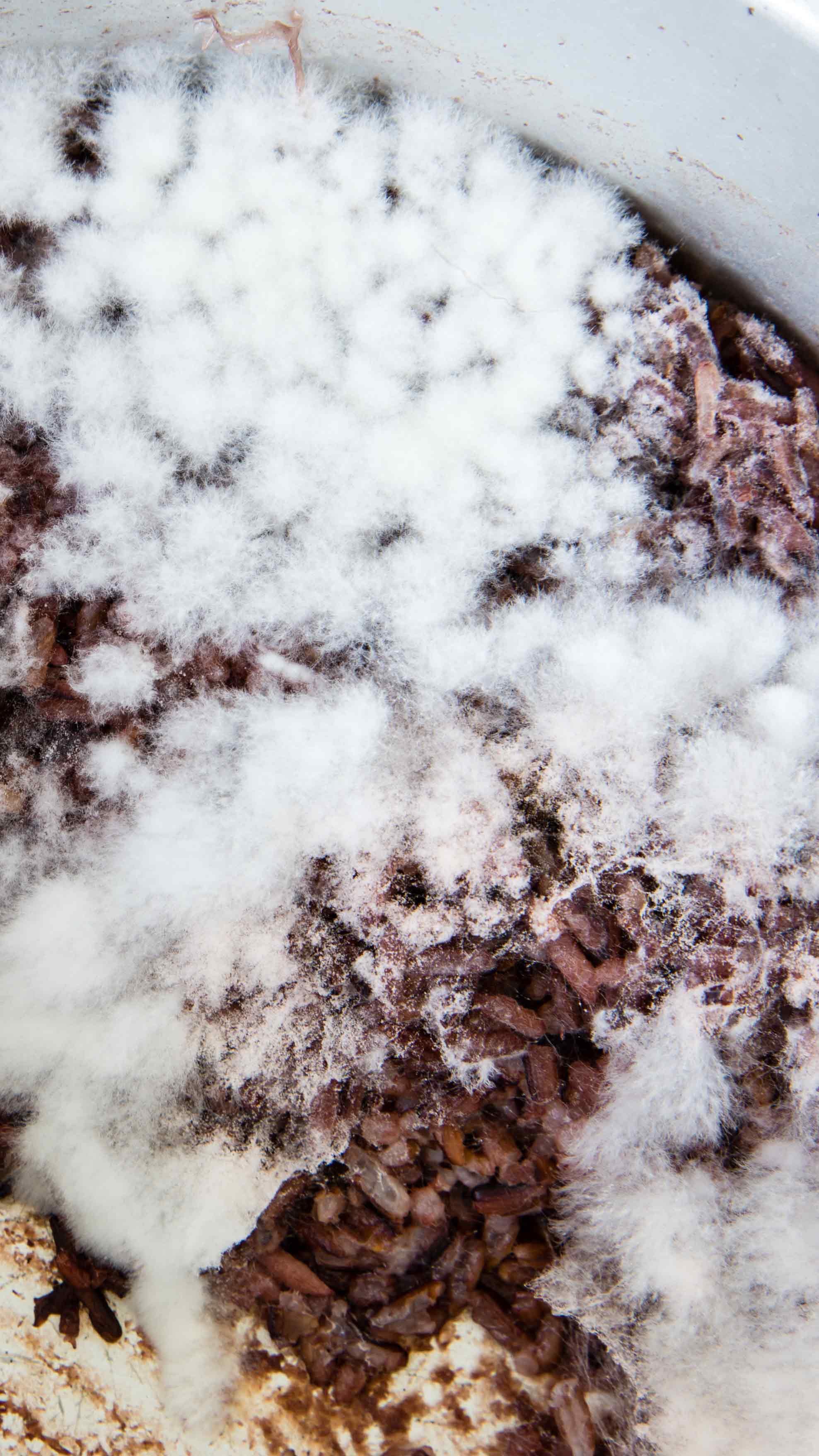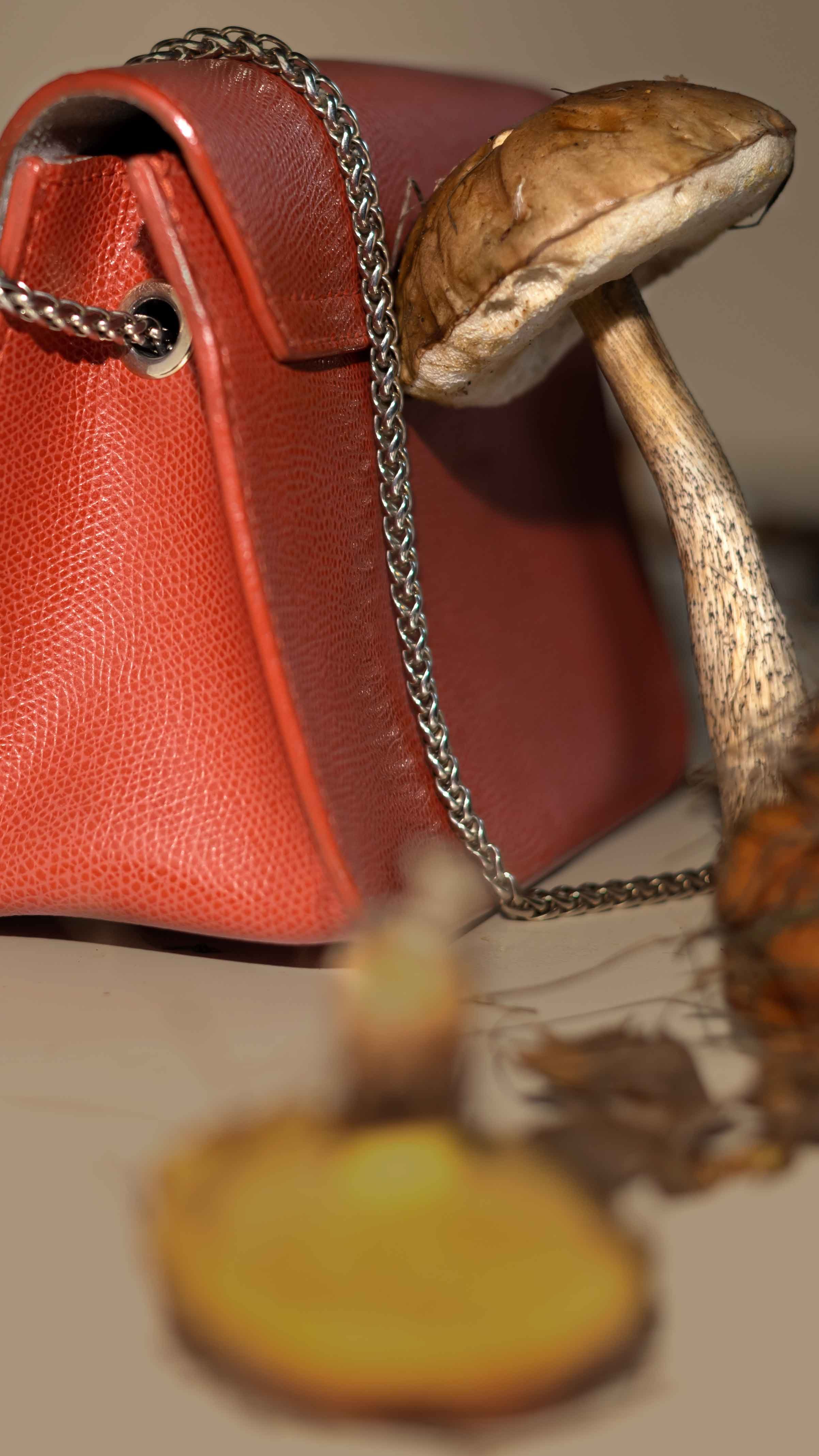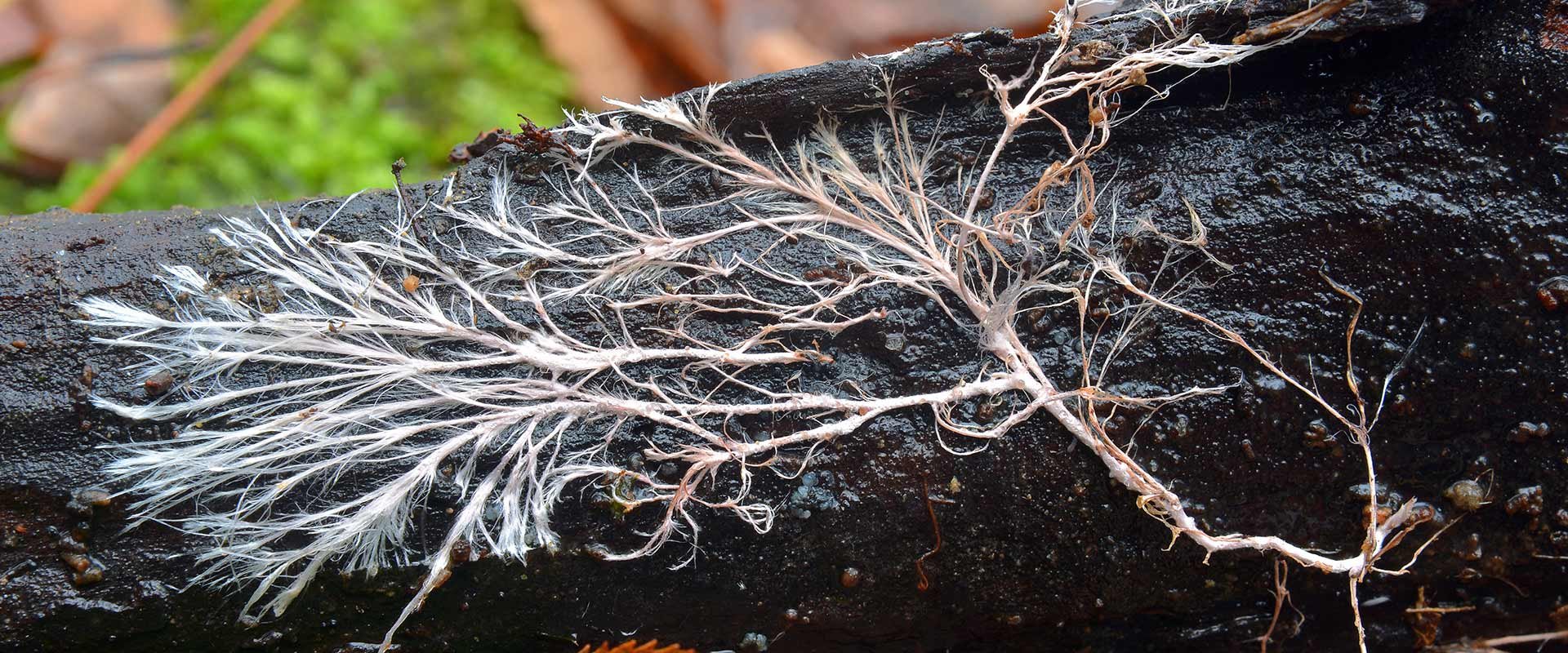
Mighty Mycelium
Fascinating, fruitful and underexplored fungus
In this latest deep dive, we’re taken into the fascinatingly diverse world of working with fungi.
Humans have used fungi for thousands of years to produce staples like bread, cheese and beer, but a new wave of startups is harnessing the transformative powers of this underexplored kingdom to create the resource-efficient, delicious staple foods of the future – and fight climate change while they’re at it. We also look into how fungi, when cultivated differently, can be used to replace leather, plastics, packaging and building material.
Excecutive Summary
A new generation of startups is trying to build sustainable businesses by making use of the efficiency of fungi to produce novel feed, food or food additives highly efficiently, and also to create biodegradable materials that can replace resource-inefficient or fossil-based products such as textile or plastics.
Fermentation technology mainly consists of two techniques: SSF is solid-based fermentation of filamentous fungi controlling environmental factors to modify the final product structure. LSF is liquid-based fungal fermentation to produce valuable compounds for various industries.
Startups highlighted in this Deep Dive fit into two industries; food and feed, and materials.
Food and feed: Fungi offer certain benefits over plant-derived alternative proteins, as their mycoproteins have an amino acid composition more compatible with humans for consumption and digestion. Fungi can also be grown into structures that can closely mimic meat, reducing the need for extrusion processes that are necessary for soy-derived alternative meats.
Materials: Mycelium, the filamentous ‘roots’ of fungi, can be coaxed to grow in specific densities and structures, offering potential to replace harmful materials from plastics to packaging to home insulation to textiles. Mycelium-based leather alternatives have been used in high-end fashion.
Regulatory hurdles, expertise, and consumer adoption are challenges for the industry, but EU interest and the creation of a new mycelium trade association aim to reduce barriers.
Mycelium is seen by investors as an emerging and versatile biotech platform, with a market timing fit in investment in alternative proteins and next-gen textiles.
Since 2013 fungal startups saw 233 deals with €3.4bn invested, peaking in 2021 with over €800m invested across both food and feed, and mycelium materials.
The number of new companies founded in the space increased starting in 2017, with a majority approaching Series A+ investment rounds, and twice as many startups founded in Europe versus the US.
Corporates have taken an interest in the space as well, mainly through strategic partnerships, signaling strong exit potential.
In recent years, the humble fungus is going through a bit of a revival in interest, due to properties that could make it a good replacement for both food and feed products, but also act as an alternative to plastic and leather products.
Being more akin to animals than to plants, fungi exist in many different forms, shapes and sizes – the most famous of which are probably yeasts, edible mushrooms and Penicillium, the mold used to produce the eponymous antibiotic.
This closeness to animals offers a benefit when it comes to using fungi to produce protein that acts as an alternative to animal-derived protein. According to researchers, mycoproteins – proteins derived from fungi – have an amino acid composition that is more compatible with humans for consumption and digestion.
The other big advantage over plant-derived alternative proteins is that mycelium, or the ‘roots’ of the fungus can be grown into structures that can closely mimic meat, reducing the need for extrusion processes that are necessary for e.g. soy-derived alternative meats. The diversity in structure also allows for the use of fungus as a replacement for a variety of materials, ranging from packaging to leather.
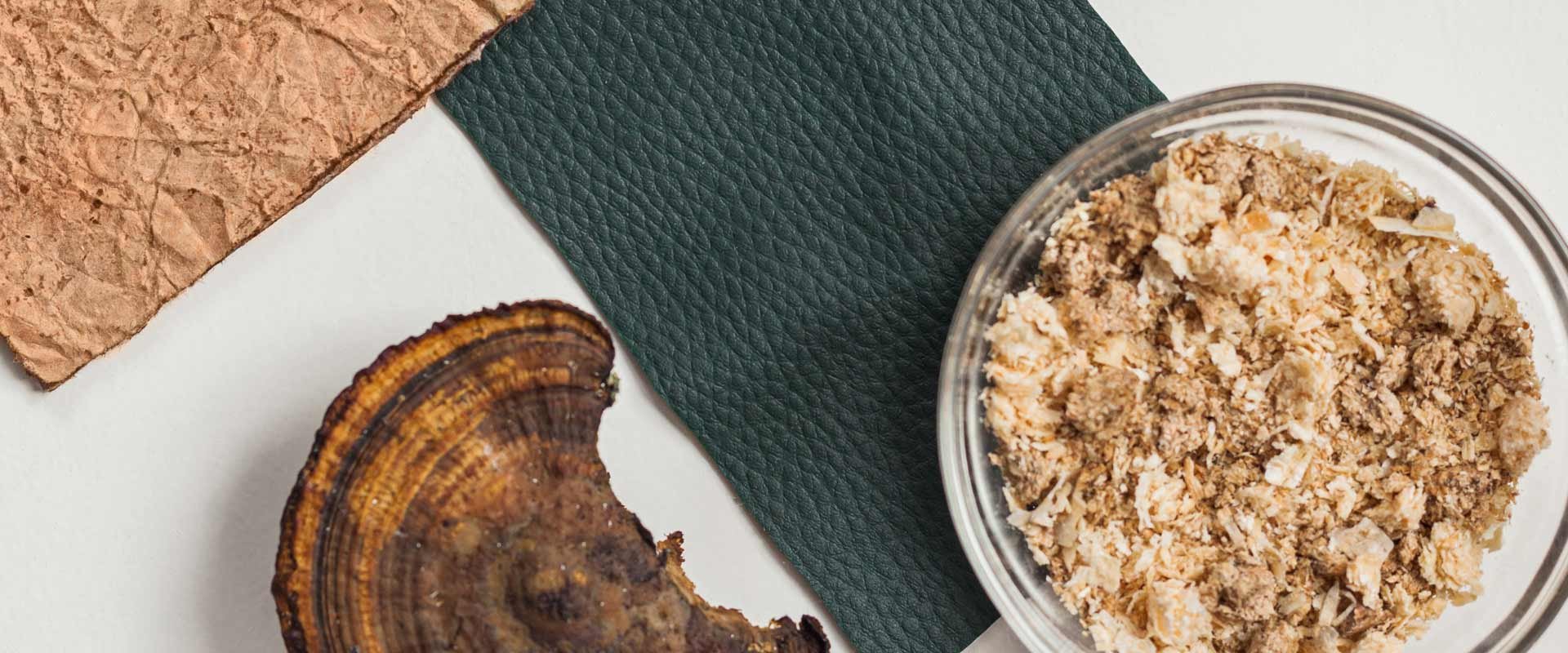
A bond since forever
Humans and fungi have coexisted for millennia. They inhabit us as part of our microbiota, which makes up 57% of our body mass. We eat mushrooms, and have since pretty much humans have been humans, as archeologists have found. And humans have, over thousands of years, become adept at exploiting the metabolic capabilities of fungi for creating food staples such as bread, soy sauce and alcoholic beverages.
More recently, both the metabolic and structural properties of fungi have come under closer inspection by both academics and businesses – partly due to necessity in trying to make more efficient use of resources, and partly because fungi offer incredible versatility in output.
In the wild, fungi function as waste disposal and natural recyclers, breaking down organic matter in order to grow, while at the same time releasing essential nutrients back into the environment. Since they’ve been around for so long, fungi have become very efficient at doing both things – growing quickly and releasing nutrients.
Harnessing the fungus
A new generation of startups is trying to make use of this efficiency to build sustainable businesses, either making use of the way fungi can transform one thing into another (like in the case of penicillin) or by making use of the way fungi grow to create novel materials. Or both.
Broadly speaking – and this is ignoring the pharmaceutical and psychoactive application of fungal metabolism products – fungi are used for two main innovative avenues; first to create novel feed, food or food additives highly efficiently, and second to create biodegradable materials that can replace resource-inefficient or fossil-based products such as textile or plastics.
Fantastic fungal foods
In the 1960’s, among fears that the world wouldn’t be able to produce enough protein to feed humans and the animals that we eat, interest in mycoproteins, or proteins produced by fungi, surged. This interest delivered some curious results, and some results we know (and eat) to this very day.
One of the first mycoproteins was developed by researchers at British Petroleum (BP), who discovered a by-product of oil refining could be transformed into protein thanks to a strain of yeast. This “food from oil” became quite popular for producing animal feed throughout the 70s and 80s, and even earned its inventor Alfred Champagnat the 1976 UNESCO Science Prize.
More or less at the same time, the Finnish pulp and paper industry invested in the discovery and industrial deployment of a different type of fungus, which would transform that waste into protein for animal feed. The effort led to the opening of two industrial plants in the mid 1980’s, capable of producing ten of thousands of kilograms of its trademark PEKILO protein per year. The mycoprotein was used as pig and poultry feed for over a decade, until changes to the paper and pulp production process eliminated the waste that fed the fungus.
Another more well-known example from this time-period is Quorn. It was developed by a partnership of British companies based on a strain of Fusarium venenatum, a fungus that could be cultivated in enormous fermenters to create biomass which would then be processed into meat-like shapes. After a decade of regulatory purgatory, the company started selling their product in the late 80s.
The protein crunch did not happen, but Quorn still exists, having found a market and jumping the regulatory hurdles to be one of the very few mycoprotein products that can be sold legally in Western markets to vegetarians and other meat-avoiders.
The ambitions of a new wave of mycoprotein startups aim somewhat higher than just targeting vegetarians though. Meat and its production are not only very resource-inefficient, it’s also a significant source of greenhouse gas emissions. These startups are aiming to replace meat altogether. Or offer a viable alternative that fits into the dietary patterns of humans at large.
Over the past few years, dozens of startups have risen to the challenge, using fungi to produce everything from meat alternatives to food additives to egg and milk protein replacements. A Swedish startup, Mycorena, is even using fungi to recreate fat, which adds the meaty juiciness missing in so many meat alternatives.
Another company, Finnish eniferBIO, has been working to revive the PEKILO process to produce mycoproteins for both animal feed and eventually human consumption. In April 2023, the company raised a €11m Series A to scale production up from 5 kilograms per day to over 5,000 kilograms.
“The fungal kingdom represents a huge untapped source of protein that we believe will rise to rival the volumes of plant- and animal-based proteins we consume today. The PEKILO mycoprotein process – having seen 15 years of industrial use since the 1970s, now being revived by eniferBio, is uniquely positioned to lead the field in providing cost-competitive, long shelf life, drop-in mycoprotein ingredients to the feed and food industries,” CEO of eniferBIO told ECBF.
Most of these startups are still early-stage, although some, such as US-based MycoTechnologies and Meati Foods, have picked up considerable investment rounds, of respectively $207,6m and $150m and are producing at industrial levels.
Taking note of the holomycote
Investors are starting to take note of the potential of using fungi for the production of food ingredients. Dutch mycoprotein startup The Protein Brewery’s CTO Wim de Laat, who spoke to ECBF on the deep dive, claims the production of their mycoprotein Fermotein produces 40 times as much protein per hectare than pigs, and 4 times more than soy beans - which has some of the highest protein content among plants.
Corporations are also jumping on the fungi bandwagon – most notably some of the world’s largest brewers, who naturally already have extensive experience with fermentation. AB InBev announced last year they’re experimenting with the production of fermented protein for food through their innovationlab Gitec.
Venture Dynamics
Investments in both LSF and SSF startups in food and feed, and materials industries have seen a long-term increasing trend in deal counts and capital investments.
This fits in with the larger trend of investments in alternative proteins and next-gen textiles, with respectively a 36% CAGR for the former and 80% CAGR for the latter.
Also in 2022, mycoprotein startup Mushlabs announced a partnership with German brewer Bitburger to start producing alt-proteins from the side-steam byproducts of their brewing process – essentially turning waste into raw material.
Obviously, innovations like these face a bunch of hurdles. As Antoni Gandia, Fermentation Scientist at Planted Foods AG told ECBF, there are still a number of technological bottlenecks in cultivating these products at scale and at a cost that can compete with existing food and feed products. There’s also the problem of expertise, with just over 30,000 mycologists worldwide, and the fact that most fungi have not been researched yet.
And then there’s real life as well, with on the one hand challenges in getting consumers to adopt fungi-based foods, and on the other hand regulatory bodies that have to assess most new foods for safety.
Regulatory challenges
That last bit is a real hindrance to the industry. The European food regulatory body EFSA takes up to five years to determine if a novel food is safe for consumption and sale, and sometimes longer.
With a typical venture horizon of six to ten years, this is a major impediment for investment in startups working on foods that fall under the novel category – a category that is determined by both the type of fungus used and the production process that follows.
On top of this, toxicological studies needed for EFSA approval for fungal food products can run into the hundreds of thousands of Euros, which smaller, innovative companies might not have readily available.
As regulatory changes, especially in the EU, are slow to happen, it’s perhaps good to know that a dedicated trade association, the Fungi Protein Association was founded late in 2022 to represent the interest of the industry to policy makers.
Also in 2023 the EU has launched a project called Like-a-pro, which aims to develop alternative proteins with a number of different sources, including mushrooms and fermented fungal protein, while also researching consumer preferences and regulatory improvements.
Then again, EFSA states that currently they’re only evaluating a single fungal product labeled as a mycoprotein, which in the application is described to be similar to the fungus used to produce Quorn.
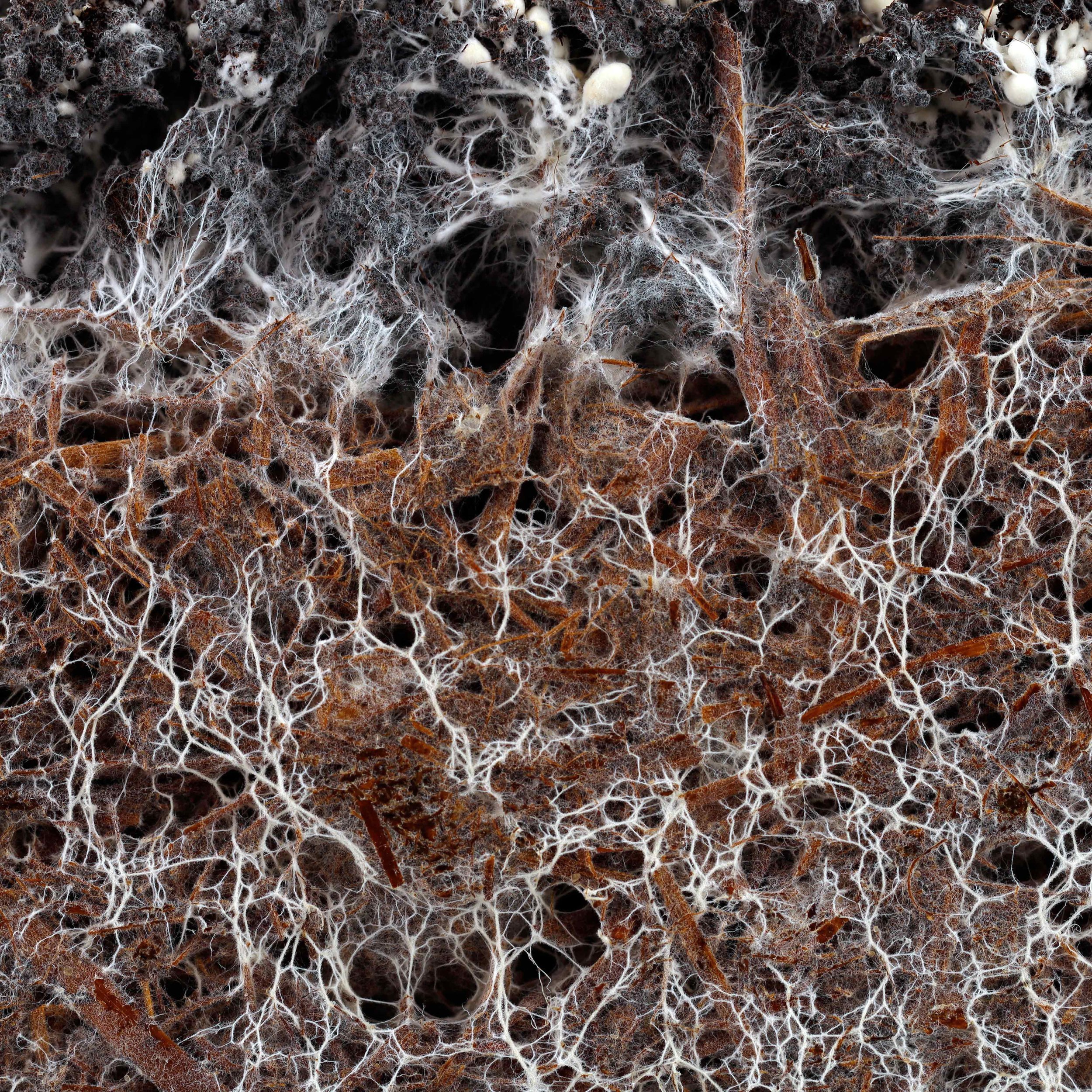
Fungus’ funky properties
While fungal products aimed for consumption have to jump through all kinds of regulatory hurdles, fungi grown in a slightly different way offer the exciting potential to replace all kinds of (sometimes harmful) materials, from plastics to packaging to home insulation to textiles.
Unlike in the production of food and feed applications of fungi, which are mostly cultivated in a bioreactor filled with liquid containing the nutrients for the fungus, materials are mostly grown through so-called solid state fermentation (SST). These materials make use of the other astonishing property of fungus; its ability to grow filament-like structures called mycelium.
Mycelium is the part of mushrooms we normally don’t see. In nature, it grows underground in vast structures, connecting far-flung parts of the fungal organism, and sometimes even acting as a kind of communication infrastructure between plants growing above it.
When cultivated in the right way, using the right type of substrate, mycelium can be coaxed to grow in specific densities and structures, giving the end-product the desired properties –– like being strong, fire retardant and light. And biodegradable, of course.
One of the pioneers in getting mycelium to grow into useful forms for useful functions is the American company Ecovative Design. In 2007, founders Eben Bayer and Gavin McIntyre developed a method of cultivating insulation material by first growing and then drying mycelium in a mold. They patented the method and currently are expanding manufacturing capacity to produce both packaging and insulation materials.
The groundwork laid by Bayer and McIntyre led Dutch startup GROWN.bio, and a plethora of other startups, including the UK’s BIOHM and Egyptian outfit Mycelium, to use similar (or licenced) methods to grow mycelium into panels that can be used for home insulation. Depending on the process, mycelium insulation has comparable insulatory properties as fiberglass or sheep’s wool, but without the need for molten glass and chemicals – or an animal. Both GROWN.bio and BIOHM’s panels are currently under review for use in construction.
As an added benefit, mycelium panels offer excellent acoustic insulation, which other companies are aiming to benefit from. Mogu, for example, is an Italian biotech startup that offers stylish mycelium-based acoustic wall panels and flooring materials. The company was founded by Maurizio Montalti, an early pioneer in developing mycelium-based material.
Fungal fashion is sprouting
Under the name SQIM, Montalti and CEO Stefano Babbini aim to create a whole range of different fungal-based materials. His other venture, going by EPHEA, is in the process of creating an alternative to leather, grown using mycelium. The beauty of this mycelium alt-leather is that unlike traditional cow hide, the structural properties can be tweaked during growth and processing.
EPHEA’s leather was used by Spanish high-end fashion brand Balenciaga to create a leather coat for their 2022 winter collection. Other corporates such as Adidas, Hermes and Kering have all already experimented with using mycelium-based leather alternatives.
In South Korea, a Hyundai-spinoff called MYCEL raised $10m in 2022 to develop myco-leather for automobile seats, high-end cosmetics, and fashion items like shoes, garments, and bags. And Indonesian Mycotech raised $1.2m to further develop their leather replacement, which was also used in haute-couture fashion in recent Paris Fashion Weeks. According to a SPEEDA Edge analysis, the market for this next gen of leather replacements is set to grow at a CAGR of 80% through 2026, reaching a $2.2bn market.
A recent New York Times article profiling US biotech outfit MycoWorks, which developed its own mycelium-based leather alternative, reported that this number might be a gross underestimate. The company also received a strategic investment from GM Ventures, the car making giant’s corporate venture arm, indicating yet another industry with an interest in a sustainable alternative to leather. MycoWorks plans to operationalise a full-scale industrial facility by the end of 2023.
Taking this whole idea even further is Dutch startup NEFFA, an acronym for New Fashion Factory. Artist and founder Aniela Hoitink developed mycelium-based textile MycoTex in 2018, and wants to replace most of the production of clothes as well by growing mycelium textile in 3D, on a kind of mannequin, in any desired shape.
Circling back, all of these applications of the humble fungus have been developed using a fraction of the one percent of fungi in existence. And we haven’t even covered its use in the pharmaceutical sector, cosmetics, pigment and enzyme production, and in so-called mycoremediation – using fungi to decontaminate the environment. There are even some scientists working on creating living computers using slime molds (which technically aren’t fungi anymore since their classification as protozoans).
Humans and fungi have co-existed for as long as humans are around. It has given us some of our most cherished foods. And after an innovation lull of a few hundred years, it looks like fungi will deliver us some of the staple foods of the future all over again – and materials to boot.
ECBF’s commitment to the transition to a more sustainable future for consumers, the environment and investors alike, and in-depth analysis of the sector leads us to believe that fermentation and mycelium startups offer great potential. We seek to be a significant financial instrument and partner for entrepreneurs looking to unlock and accelerate the economic potential of the circular bioeconomy in Europe, and help create a better and healthier future for everyone.
For questions and comments, please refer to
Marie Asano, Partner at ECBF
marie.asano@ecbf.vc
Eugen Kaprov, Senior Associate at ECBF
eugen.kaprov@ecbf.vc
Mridul Pareek, Analyst at ECBF
mridul.pareek@ecbf.vc
Cornelia Mann, Marketing & Communications at ECBF



